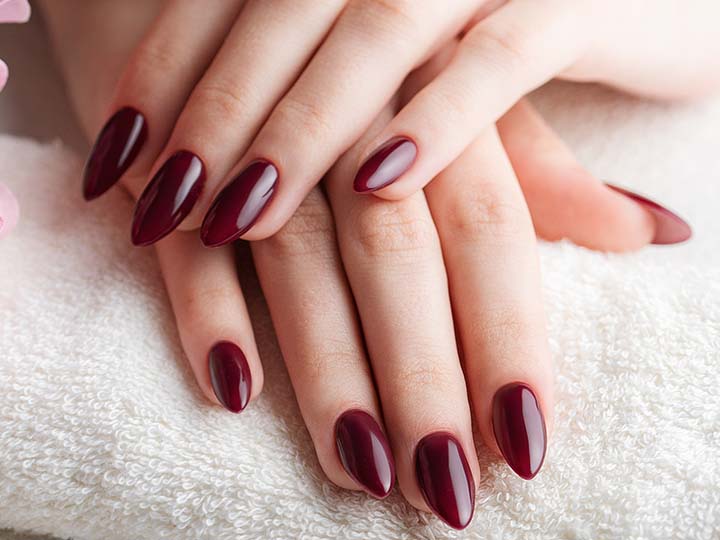Why Nail Glue is a Manicure Staple
If you love manicures or wear artificial nails, you’ve likely come across nail glue at some point. Whether you’re a fan of press-ons, DIY nail art, or just need a quick fix for a broken nail, nail glue is a lifesaver. But you might be asking yourself, what is nail glue, and how exactly should you use it?
Nail glue is more than just an adhesive. It’s designed specifically for the unique needs of your nails—providing a strong, long-lasting bond while being safe enough for repeated use on delicate nail beds. If you’ve been unsure about how to use nail glue effectively, keep reading for all the tips and tricks you’ll need to master it!
What Is Nail Glue?
Nail glue is a specialized adhesive used to bond artificial nails, nail tips, or nail art to natural nails. It’s typically made from cyanoacrylate, the same ingredient found in super glue, but formulated to be gentler on your nails. Nail glue is designed to offer a strong and durable bond while being easy enough to remove without damaging your natural nails.
Key Features of Nail Glue:
- Strong bonding: Provides a firm hold that can last for days or even weeks.
- Quick-drying: Typically dries within a few seconds to ensure a hassle-free application.
- Safe for nails: Formulated to be less damaging than regular adhesives like super glue.
- Water-resistant: Helps nails stay secure even after exposure to water.
Nail glue comes in small, handy tubes and is easy to apply in precise amounts, making it perfect for both artificial nail applications and nail repairs.
What Is Nail Glue Used For?
Wondering how you can use nail glue in your nail care routine? It’s versatile and can be used in several ways:
1. Attaching Artificial Nails
- Nail glue is most commonly used for attaching false nails or press-on nails. It creates a secure bond between your natural nail and the artificial one, ensuring it stays in place for days, if not weeks.
2. Repairing Broken Nails
- Have a chipped or cracked nail? Nail glue can quickly fix broken nails by adhering the broken piece back onto the nail or holding a nail wrap in place to prevent further damage.
3. Applying Nail Tips
- If you love doing acrylic nails or gel extensions, nail glue is essential for attaching the nail tips before you apply the acrylic or gel over the top.
4. Securing Nail Art
- For those who love intricate nail art, nail glue is perfect for securing rhinestones, studs, and charms to your nails without worrying about them falling off.
How to Use Nail Glue Properly
While nail glue can work wonders, it’s essential to use it correctly to get the best results and avoid damaging your natural nails. Follow these steps for a seamless application:
1. Prep Your Nails
- Start by cleaning your nails. Make sure they’re free of any oils, dirt, or old polish by using an acetone-based nail polish remover.
- File and buff the surface of your natural nails to ensure a smooth surface for the glue to adhere to.
- Push back your cuticles to make sure the glue only touches the nail, not the skin.
2. Apply the Nail Glue
- Carefully squeeze a small dot of glue onto the artificial nail or the tip of your natural nail, depending on what you’re applying. You don’t need much—a little goes a long way!
- Spread the glue evenly over the nail, but don’t over-apply. Too much glue can cause air bubbles or make the nail lift prematurely.
3. Press and Hold
- Align the artificial nail or tip with your natural nail. Press it down firmly and hold it in place for 10-20 seconds to ensure a strong bond.
- If you’re attaching nail art, press the decoration down gently but firmly until it adheres to the nail.
4. Clean Excess Glue
- Sometimes glue can seep out from under the edges of the artificial nail. Use a cuticle stick or tweezers to gently remove any excess glue around the edges before it dries completely.
5. Let It Set
- Allow the glue to fully set for a couple of minutes before doing anything with your hands. This ensures the bond is strong and reduces the risk of the nail coming loose.
Tips for Using Nail Glue Safely
Since nail glue is a strong adhesive, there are a few precautions you should take to ensure it doesn’t harm your natural nails or skin:
- Avoid skin contact: Nail glue is safe for nails but can irritate the skin. Make sure to keep the glue away from your cuticles and surrounding skin.
- Work in a ventilated area: Nail glue contains chemicals that can emit fumes, so it’s best to apply it in a well-ventilated space.
- Don’t rush the process: Give the glue time to dry completely before putting your hands in water or applying pressure to your nails.
- Use acetone for removal: When you’re ready to remove your nails, don’t just yank them off! Use acetone or a nail glue remover to dissolve the adhesive gently, preventing damage to your natural nails.
Pros and Cons of Nail Glue
Like any beauty product, nail glue has its advantages and disadvantages. Here’s a quick overview to help you decide if it’s right for you:
Pros:
- Strong hold: Keeps artificial nails secure for days or weeks.
- Fast-drying: No need to wait long for the glue to set.
- Versatile: Works for attaching nails, nail art, and fixing breaks.
- Affordable: Small, inexpensive tubes last for several applications.
Cons:
- Can be difficult to remove: Without the proper acetone-based remover, it can be tricky to take off.
- Harsh chemicals: Some glues contain harsh chemicals that may dry out your natural nails.
- Potential for skin irritation: If not applied carefully, it can irritate the skin around your nails.
How to Remove Nail Glue
When the time comes to take off your artificial nails, here’s the best way to remove nail glue safely:
- Soak your nails in acetone: Fill a bowl with acetone and soak your nails for 10-15 minutes. The acetone will break down the glue, making it easier to remove.
- Gently peel off the nails: Once the glue has softened, use an orange stick to gently lift the false nails off. Be careful not to pry them off, as this can damage your natural nails.
- Moisturise: Acetone can be drying, so follow up with a rich cuticle oil or hand cream to restore moisture to your nails and skin.
Wrapping It Up: Mastering Nail Glue
Nail glue is a handy tool for securing false nails, repairing breaks, and creating beautiful nail art. When used correctly, it’s safe and provides a strong, long-lasting hold. Whether you’re a fan of acrylics, press-ons, or just want a quick fix, knowing what nail glue is and how to use it can make all the difference in your manicure routine. With the right technique and proper care, nail glue can elevate your at-home manicures to a professional level!
Ready for a beauty upgrade? Unlock the power of pure, luxurious cosmetics with Mersi!
FAQs
- What is nail glue made of?
Nail glue is primarily made from cyanoacrylate, the same chemical found in super glue. However, nail glue is specially formulated to be safe for your nails and less harsh on your skin.
- How long does nail glue last?
Nail glue can keep false nails or nail tips secure for up to one to two weeks, depending on how well you apply it and how much wear your nails endure.
- Can I use super glue instead of nail glue?
It’s not recommended to use super glue for your nails. While both glues contain cyanoacrylate, super glue is much stronger and not designed for the delicate surface of your nails. It can cause damage and be difficult to remove.
- Is nail glue bad for your nails?
If used correctly and not over-applied, nail glue is generally safe for your nails. However, repeated use without proper care (like soaking for removal) can dry out your nails and make them brittle.
- How do I remove nail glue without damaging my nails?
The safest way to remove nail glue is by soaking your nails in acetone for 10-15 minutes. Avoid peeling or yanking off glued nails, as this can cause significant damage.





Leave a comment
This site is protected by hCaptcha and the hCaptcha Privacy Policy and Terms of Service apply.